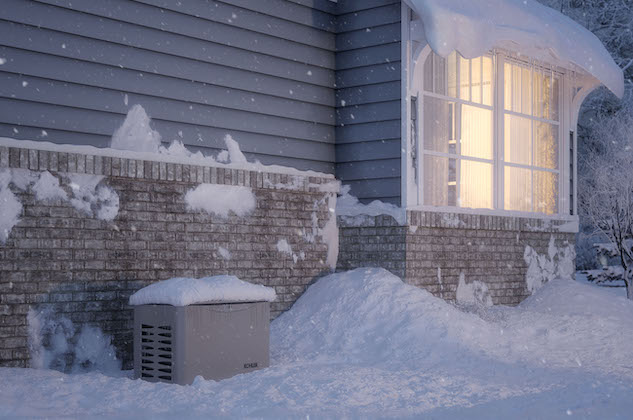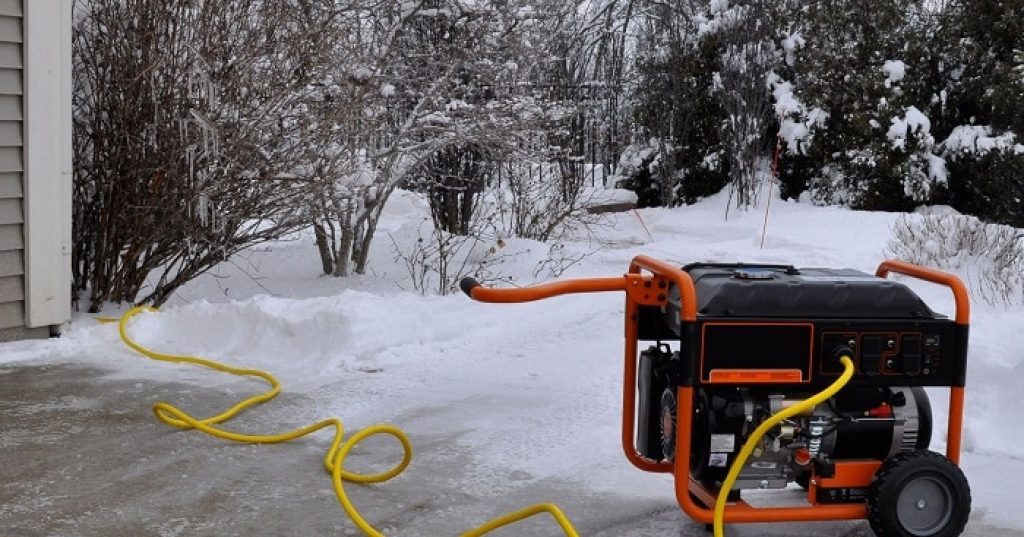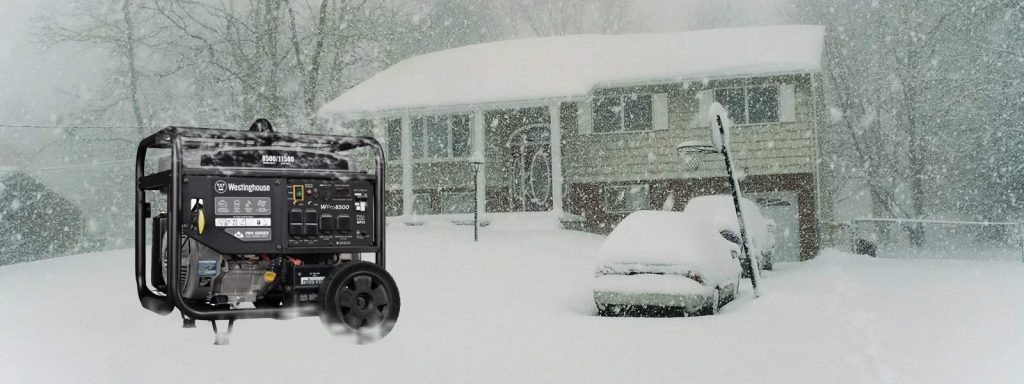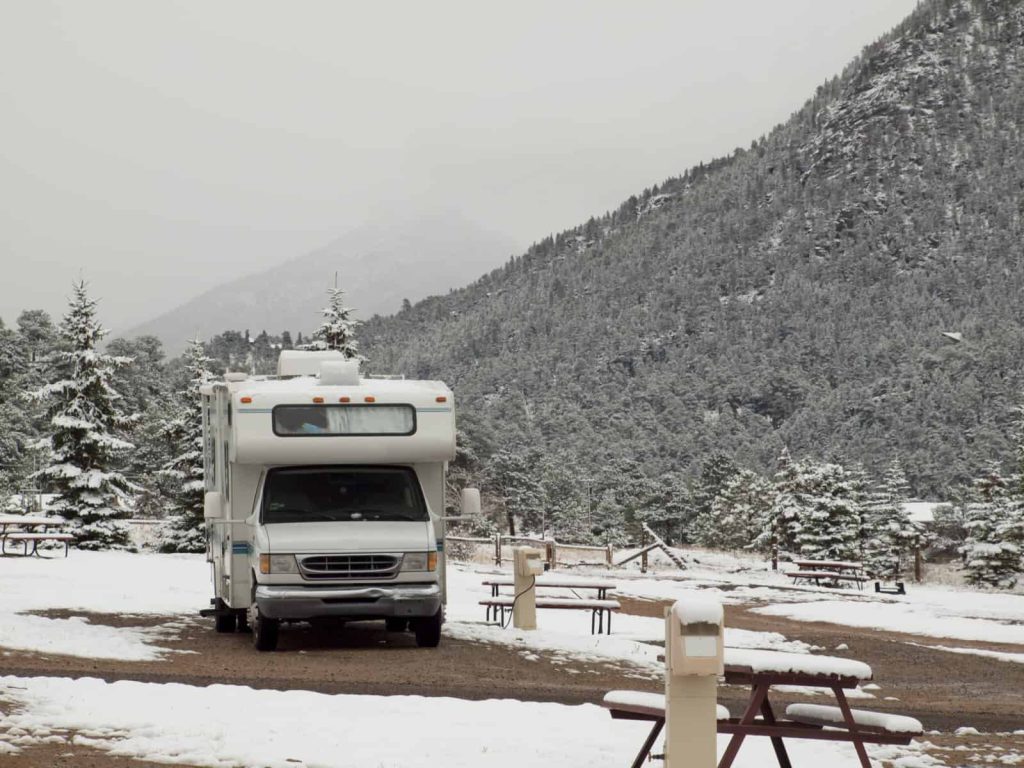
Winter is coming, and during the winter season, people tend to stay indoors and use more power in the house. And when extreme weather hits, power interruption and electrical damage are inevitable. Thus, preparing your generator for the winter is important to prevent damage.
How to Winterize a Generator

Based on data, 50% of all portable generator-related carbon monoxide deaths occurred during the winter months (November – February). Thus, you must know how to maintain and prepare your generator for winter. It is one way to keep you and your family safe and to make your generator free from damage.
You need to remember a few things when winterizing your generator. Generators must be stored in clean and dry spaces, but there is some routine you must perform for your standby or portable generators.
Why Winterizing a Generator is Important
So, what is a winterization of the generator, and why do you need to do it?
Winterization refers to the process of preparing the generator for harsh weather. It makes the generator weatherproof, keeping it operational and damage-free during winter.
Here are a few things why winterizing a generator is necessary:
- It helps you extend the life of your generator.
- It allows you to save more on ongoing costs for repair and fuel.
- It ensures that your generator is in optimal condition, making it run smoothly throughout the winter.
How to Winterize a Seasonal Portable Generator
Winter months mean you need to store the portable generator you use to power your RV. Before you store the portable generator along with your camping gears, ensure you winterize your generator to ensure it will still work correctly in the next season.

5 Steps to Winterize Your Portable Generator
Drain the fuel.
While the freezing weather does not affect the generator’s performance too much, it can damage the fuel lines and tank if not drained. After about two weeks without use, the gasoline in the fuel lines and tanks can erode. You must drain the fuel lines and tank before storing.
Clean the carburetor.
It is important to clean the carburetor at the end of the season to remove any accumulated sludge. If you have a dual-fuel generator and have only operated the generator on LPG, there is no need to clean the carburetor.
Change oil and filter.
It is one of the most important things to do to keep your generator free from damage. The new oil will keep the engine and all the generator parts lubricated. Since the viscosity of the oil is affected by the winter weather, make sure to get the generator oil that works well for the cold weather. Winter-grade oil is thinner and flows easier even in low and freezing temperatures.
Remove the spark plug.
This step is to prevent dust and debris from entering. Some generator manufacturers suggest removing the spark plug and plugging the opening.
Store generator safely.
When RV and camping season is done, do not leave your generator exposed to snow and ice. The snow and ice will melt and can cause run and corrosion on its parts. It is always recommended to store the generator in a dry, weather-proof generator shed.
How to Winterize a Standby Generator
Standby generators offer huge power output, so they are widely used as backup options in homes and worksites. And because of their large size, often, these generators are placed near the home or business with bushes and gardens planted around them.
So, how will you winterize a standby generator? Here’s how you do it.
Clear the surrounding brush.
First thing first – clear the area where the generator is located. Aside from keeping the generator safe and free from damage, it will also give clear access for maintenance.
Perform routine cleaning and tune-up.
Since it is a standby generator, let the expert perform the routine clean-up and tune-up. The service technician will look into all parts and components, clean them, change the fluids, and diagnose any possible issues. Also, make sure the automatic start feature also works when needed.
Install a battery warmer.
The battery should also be checked since cold weather is not a friend of batteries. This is when a battery warmer comes in handy. It turns on and keeps the battery from losing power when the temperature reaches a certain degree.
Run the generator periodically.
To keep the parts of the generators lubricated and operational, you must run the generator monthly for 15 minutes. Some generators automatically do this, but if not, you have to schedule it and do it manually.
Installation of Additional Gear
Aside from the battery warmer, there are several devices that you can install to ensure that your generator works properly even if it is exposed to low and freezing temperatures. Some of the common devices are the following:
Engine Block Heaters
You must install engine block heaters to prevent the engine oil from gelling up and ruining the engine itself. The device works easily. It warms the oil before starting the engine, properly lubricating the engine’s internal components.
Heating Pads
Heating pads are usually four to five inches in size. You put them on top of the engine or battery to warm them up. It only takes 10 to 15 minutes for the engine oil to recuperate, lubricating the engine components. If you are on a budget, heating pads are the most budget-friendly option if you want to winterize your generator.
Cold Winter Kits
You can buy cold winter kits if you want the easiest way to prepare your generator for the winter months. These kits are a basic combination of generator gadgets, including engine block heaters and heating pads. It contains several gadgets, so it is a bit pricey.

More Generator Tips for the Winter Months
- A fuel stabilizer is highly recommended, especially if the generator is left outside in the cold for days or weeks. The fuel stabilizer will free the fuel injectors and carburetors from rust and corrosion. It also keeps the components lubricated. The fuel stabilizer is suitable for portable gasoline generators.
- Cold-starting a generator that has been sitting outside and exposed to snow and ice for hours is a bad idea. If you started loading right away, there is a huge possibility that you could destroy the generator. Give it time for the engine and fluids to get warm. Run the generator for 15 to 20 minutes without plugging anything.
- If you are using a portable diesel generator, it is recommended to use an anti-gel supplement. The Paraffin component of diesel becomes a gel when exposed to cold temperatures. Adding the anti-gel supplement will prevent this from happening. It keeps the engine well-lubricated, allowing you to store it for weeks or months. When you take out the generator after the winter season, you can use it immediately.
- Make sure that there is no water residue inside the engine. The water residue tends to corrode the metal surfaces. To avoid this situation, replacing water-absorbing filters and draining the water separator is recommended. Doing this will save you hundreds of dollars in the process.
- Fluids, such as anti-freeze coolant, are essential if you want to extend the lifespan of your portable generator. Check all fluids before storing your generator for the winter season.
- Aside from ensuring all the internal components are well-lubricated, you must also clean the generator’s exterior. Clean and grease the generator’s surface. You can easily remove the dirt and dust using a clean rug. Grease the metal parts of the generator to prevent them from scraping each other.
FAQ
Does a generator need to be winterized?
Yes, just like RVs and cars, you need to winterize your generator to make sure it performs well in the winter or when you take it out again after storing it for weeks or months. Winterizing your generator means extending the life of your generator and ensuring maximum performance. When done correctly, the engine will stay lubricated, and no rust or corrosion will be detected in the generator. You should winterize portable and standby generators to prevent damage. Winterization can be done yourself or with the help of an expert.
How do I prepare my generator for winter?
Getting ready or preparing your generator for the winter months is not difficult at all. You just need the right tools, effort, and time to do it correctly. First, you should keep your generator in a clean and weatherproof place. You can also buy or build your own generator shelter. Next, check all fluids and replace the oil and filters. Remember to use a winter-grade oil to keep the adequate viscosity of the oil. You need also to check the battery and remove all water residue. It is also recommended to use additional devices (heating pads, engine block heater, fuel stabilizer) to help the engine and battery warm up.
How do I keep my generator from freezing?
The first thing you should do to avoid your generator from freezing is to store your generator in a weather-proof shelter, Do not leave out your generator in the cold, exposing your generator to snow and ice. Use a cover or ventilated shelter if you are planning to store your generator for a long period. During the winter months, it is necessary to winterize your generator to prevent damage and spend additional costs for repair.
Can you leave a generator outside in winter?
No, you should not leave the generator outside in winter. Exposure to water, snow, and ice will damage the generator. The generator will stop working properly when left in the cold for too long. You need to store the generator in a clean, dry place. To prevent the generator from freezing, you need also to winterize your generator. Winterizing a generator needs time and effort, and to further prevent damage, you should also use heating pads, battery warmer, and engine block heater to keep the engine and battery lubricated and properly working.
Will snow ruin a generator?
Yes, exposing the generator to snow and rain will ruin your generator. That is why it is recommended to store your generator in a weather-proof shelter during the winter. Exposing the generator to the cold for a long period will damage the generator. Thus, during the winter season, it is recommended to winterize your generator to ensure maximum performance.
How to protect my generator from rain and snow?
You can protect your generator from rain and snow by keeping it in a generator tent or shelter. You can build your own generator shelter or buy a ready-to-use generator enclosure. The shelter should be lightweight, weather-proof, and easy to assemble. Make sure there is enough ventilation for the air to circulate.
Conclusion
Extreme weather, sub-freezing temperature, snow, water, and ice can all damage your standby and portable generator if not properly maintained. Thus, before the winter comes, make sure to prepare your generator. Aside from learning how to winterize a generator, you should also use the generator properly and follow the recommended safety measures.


